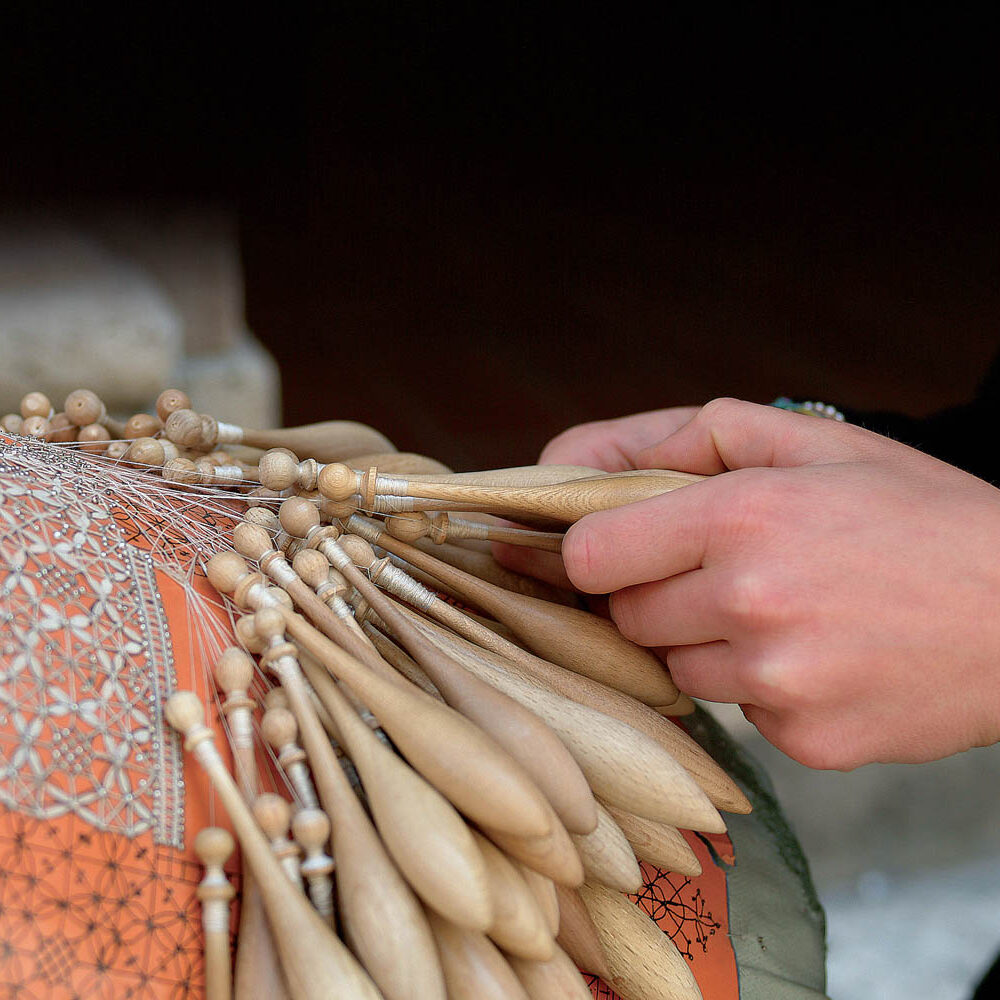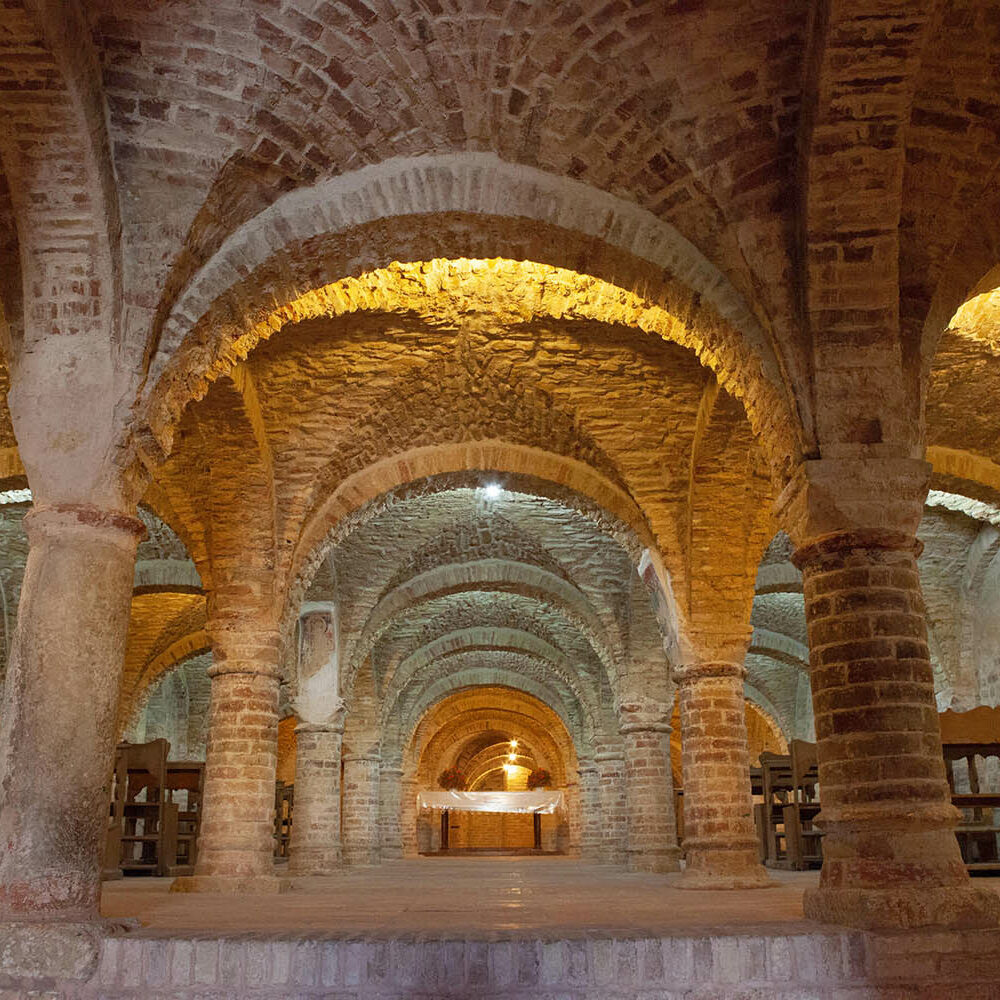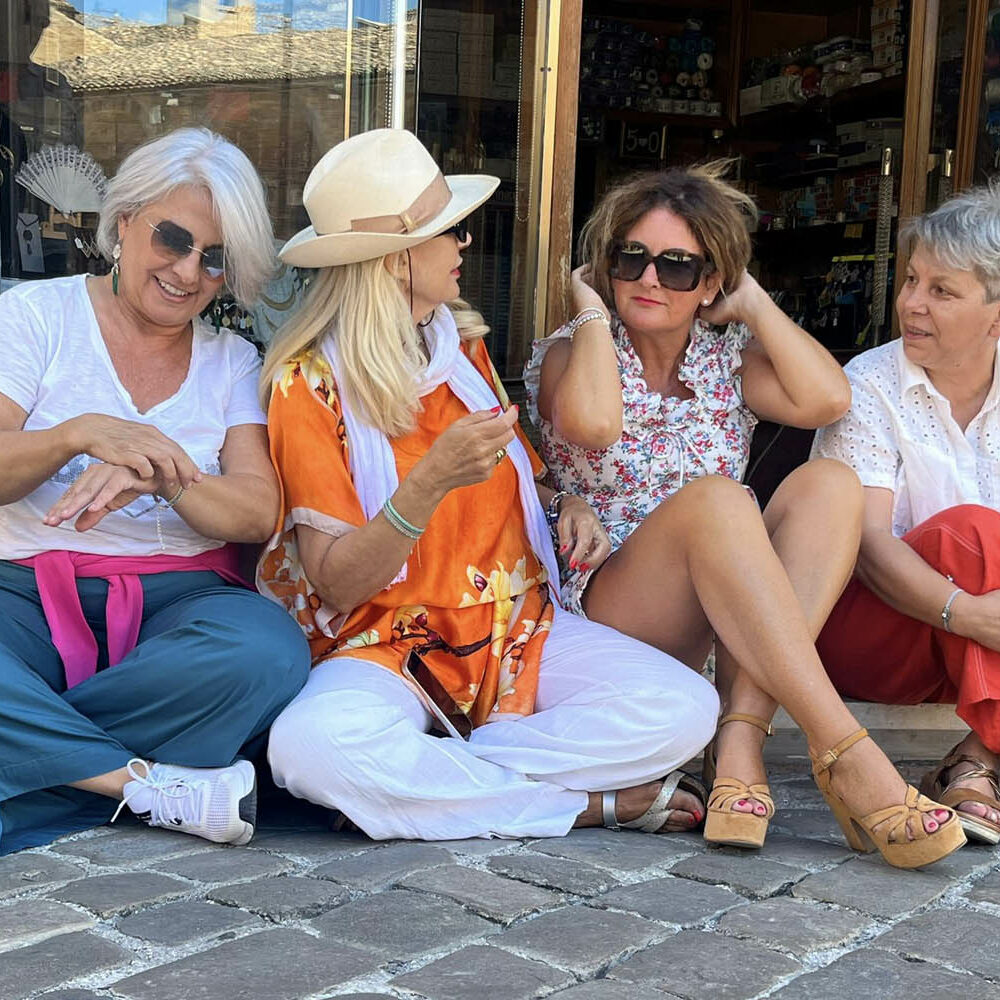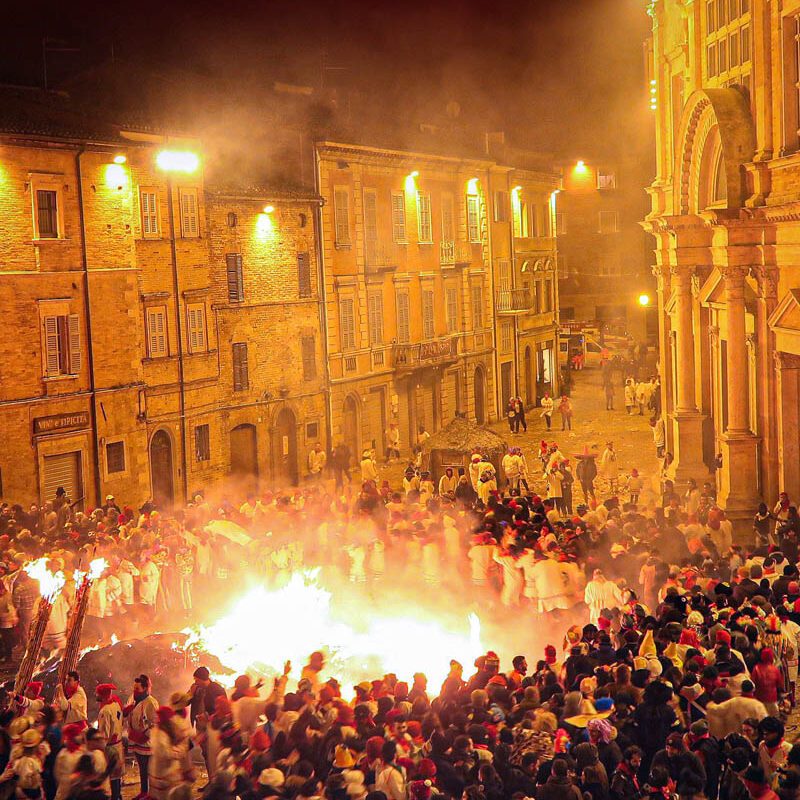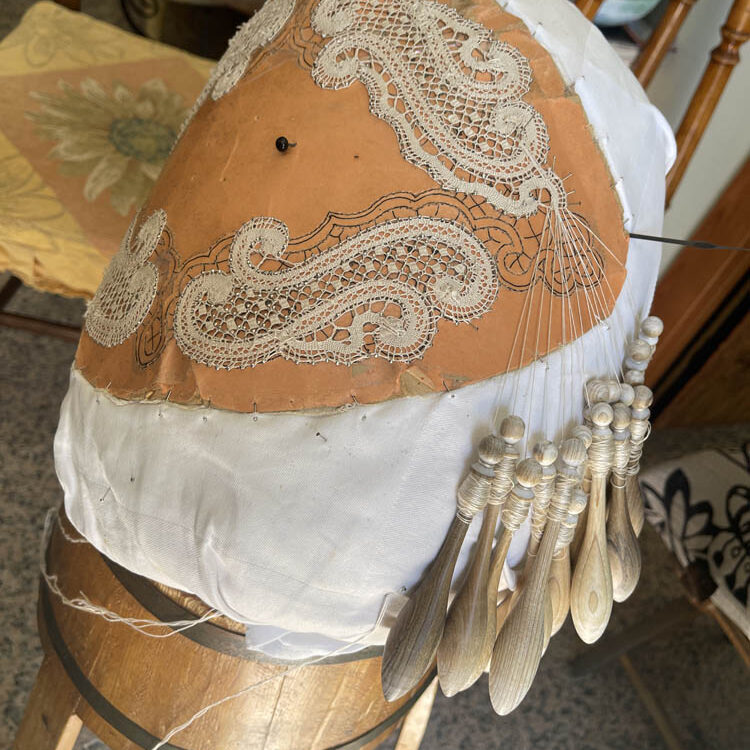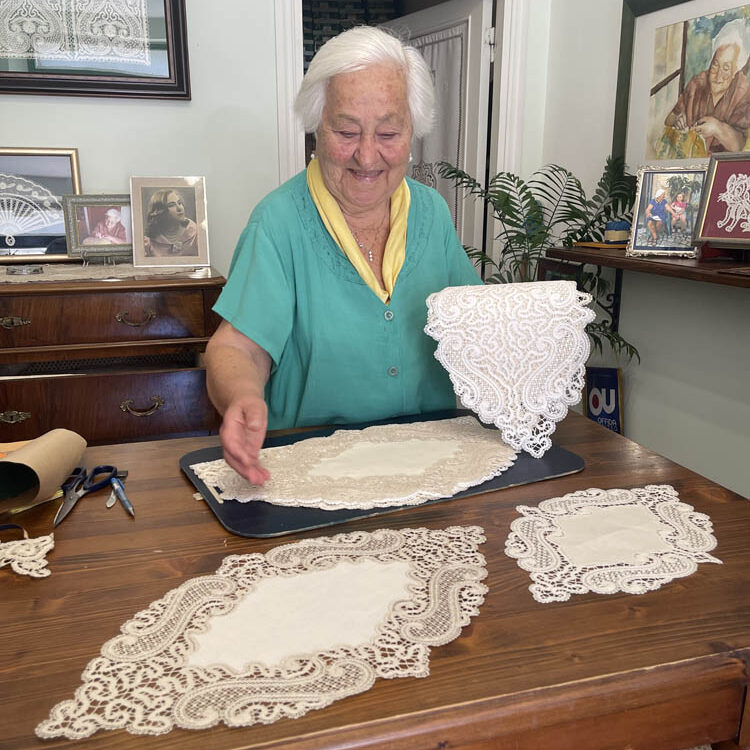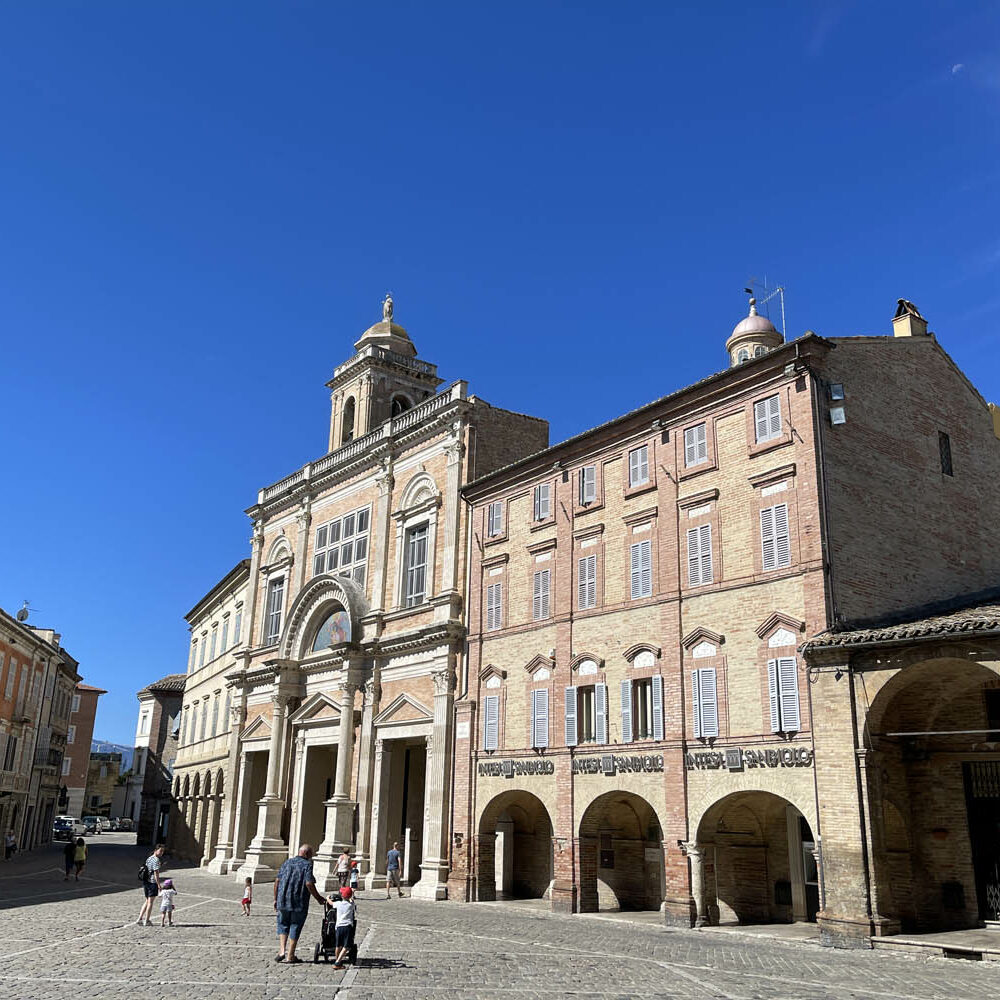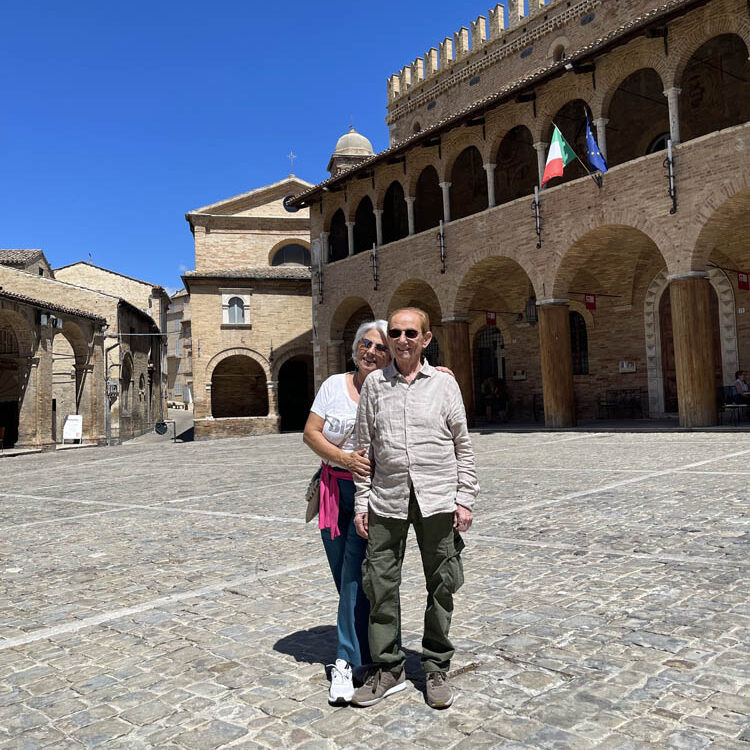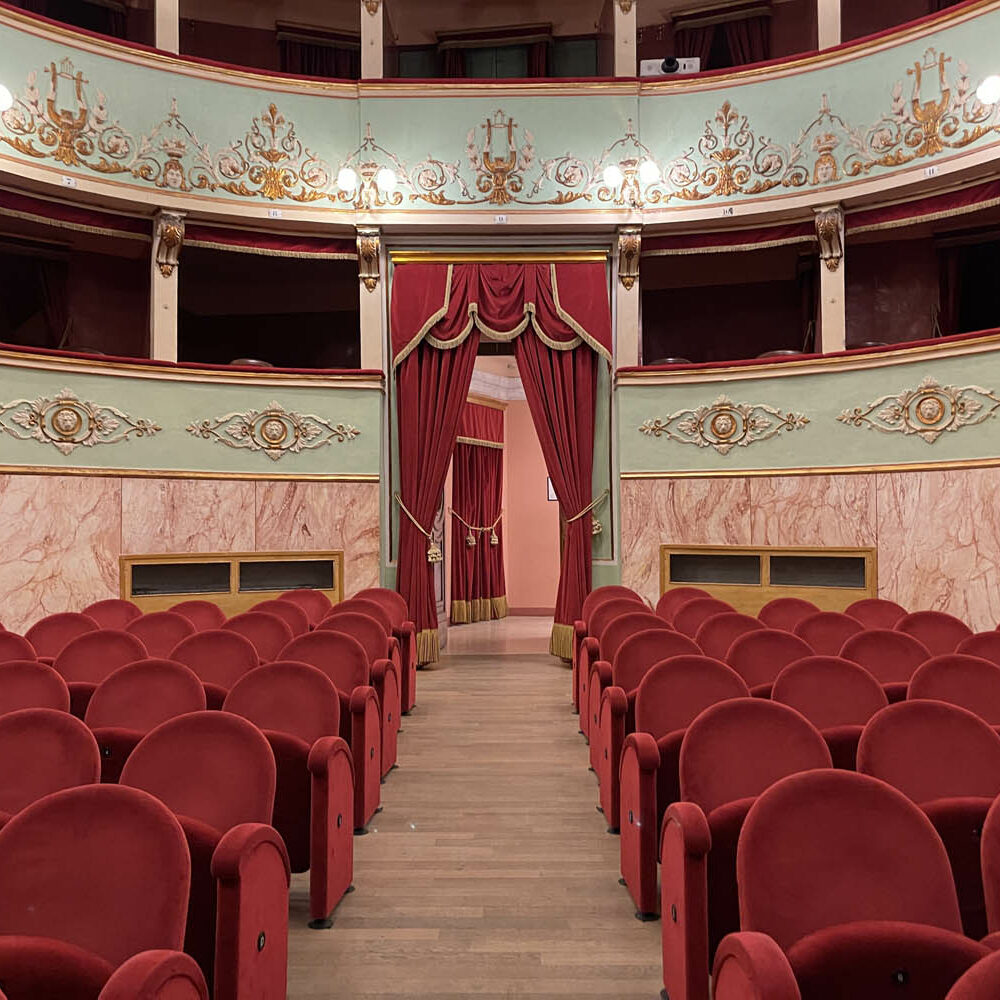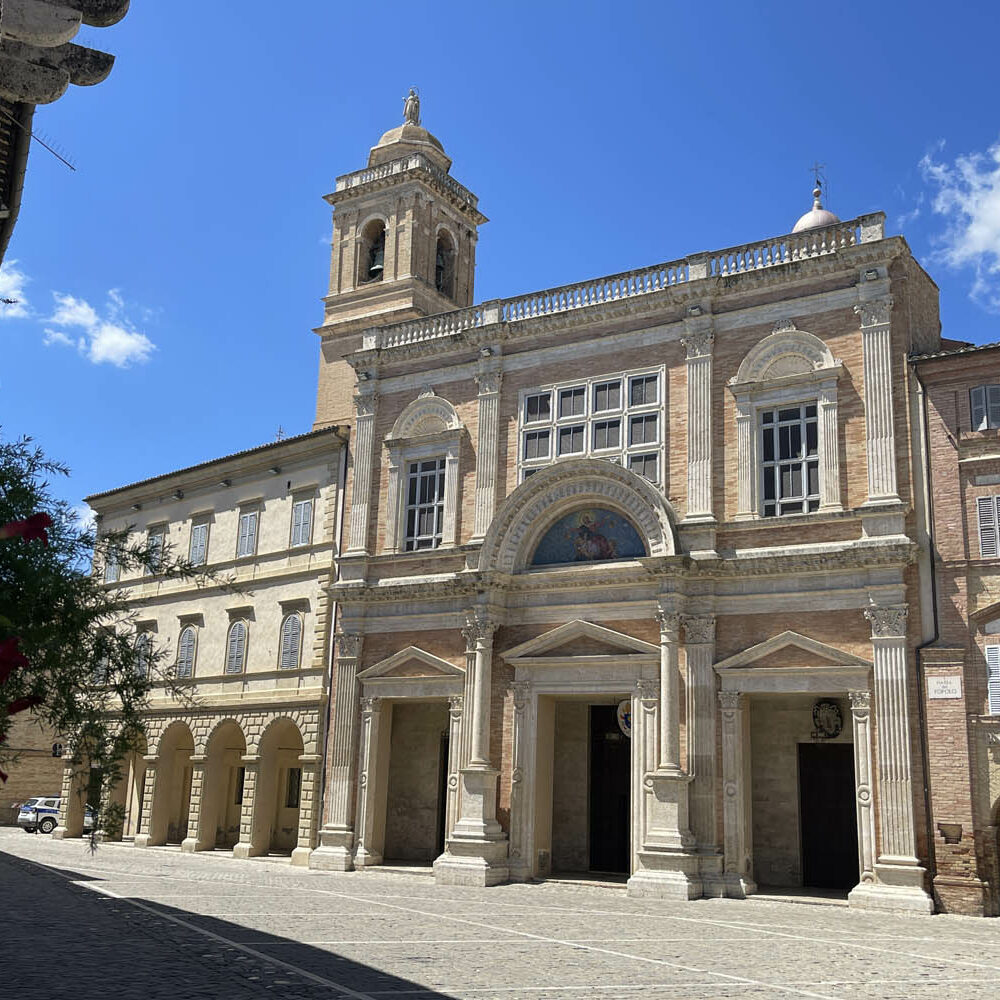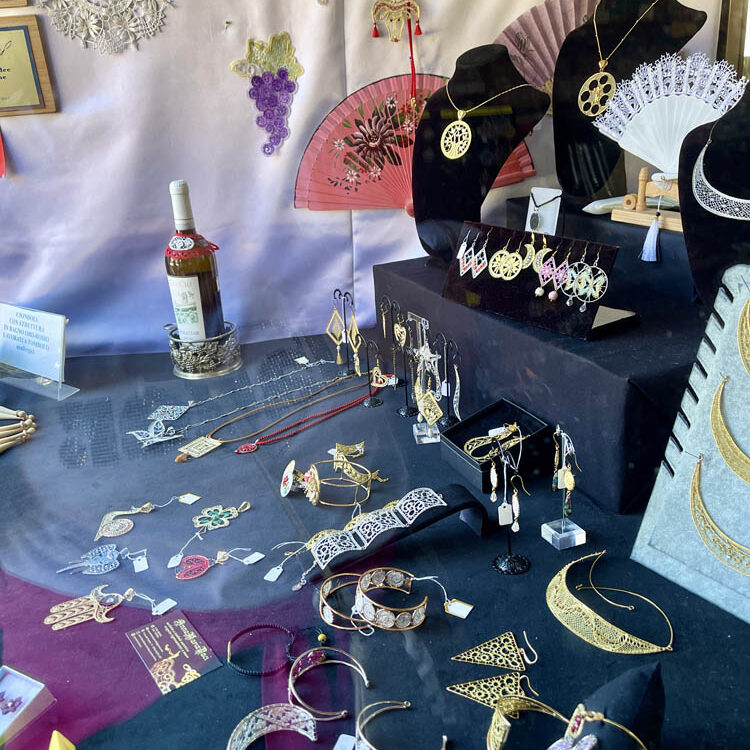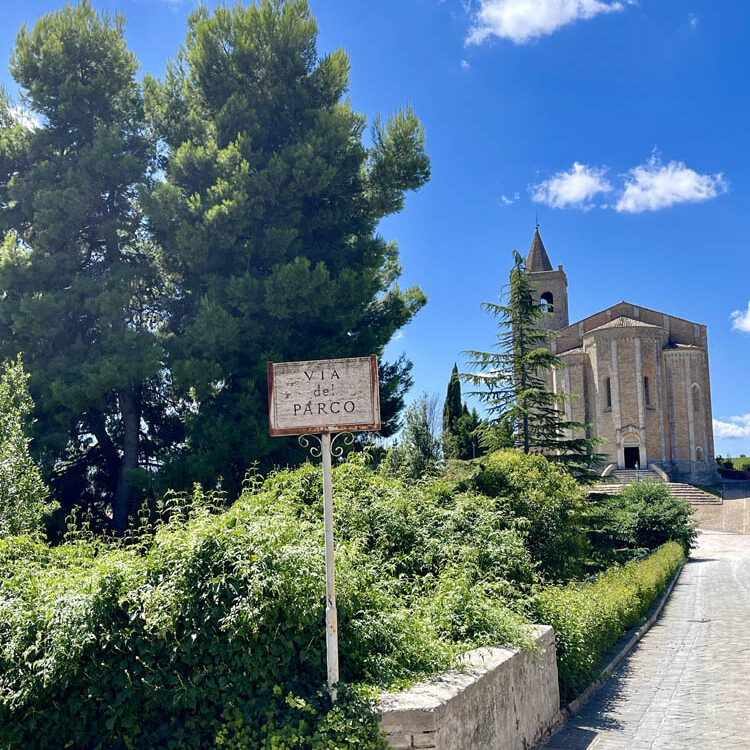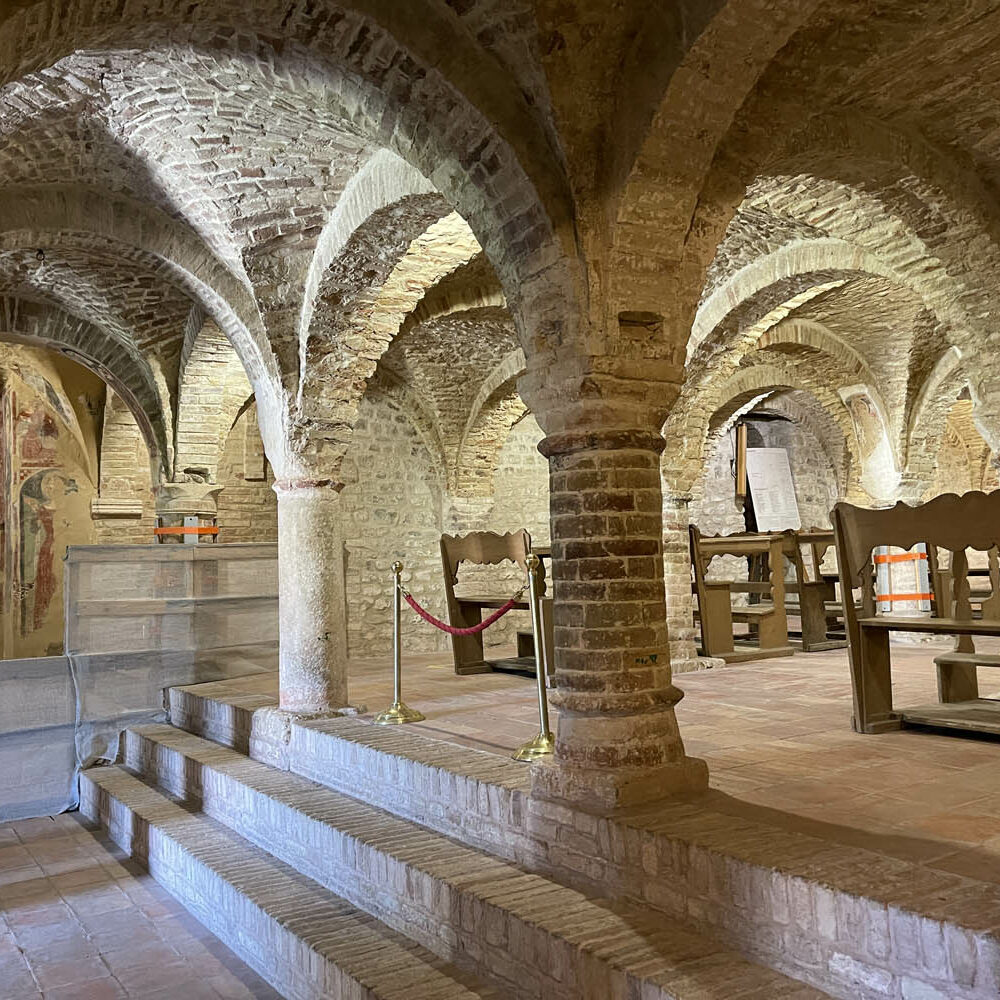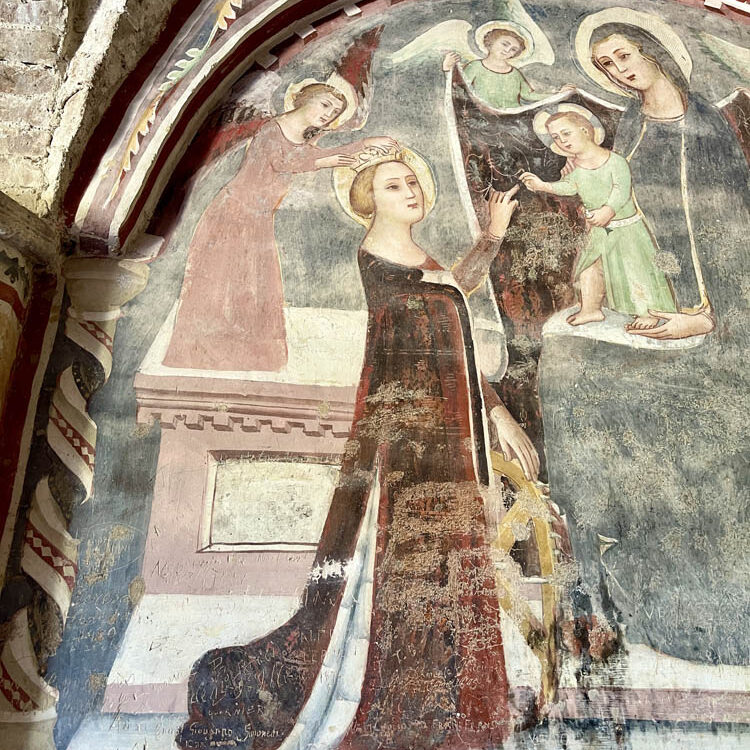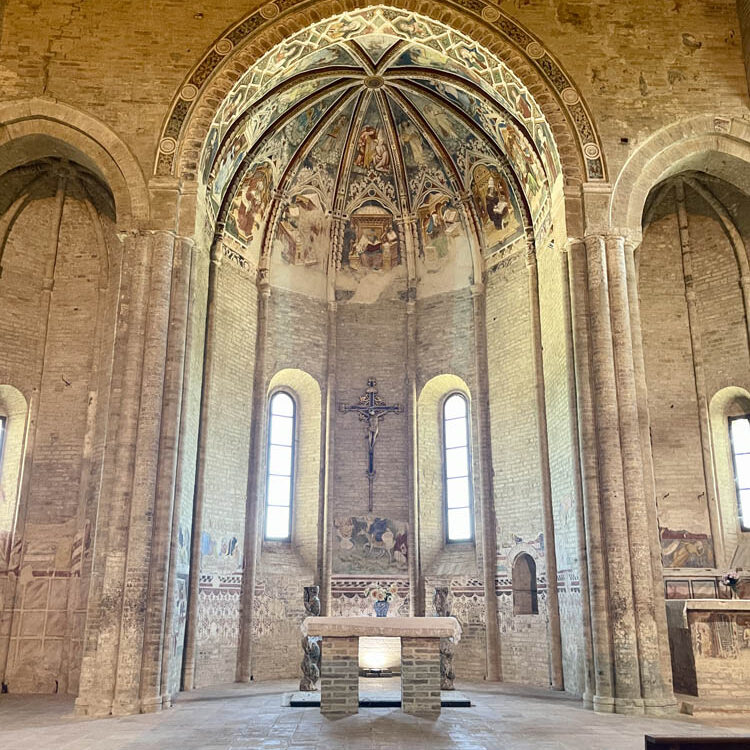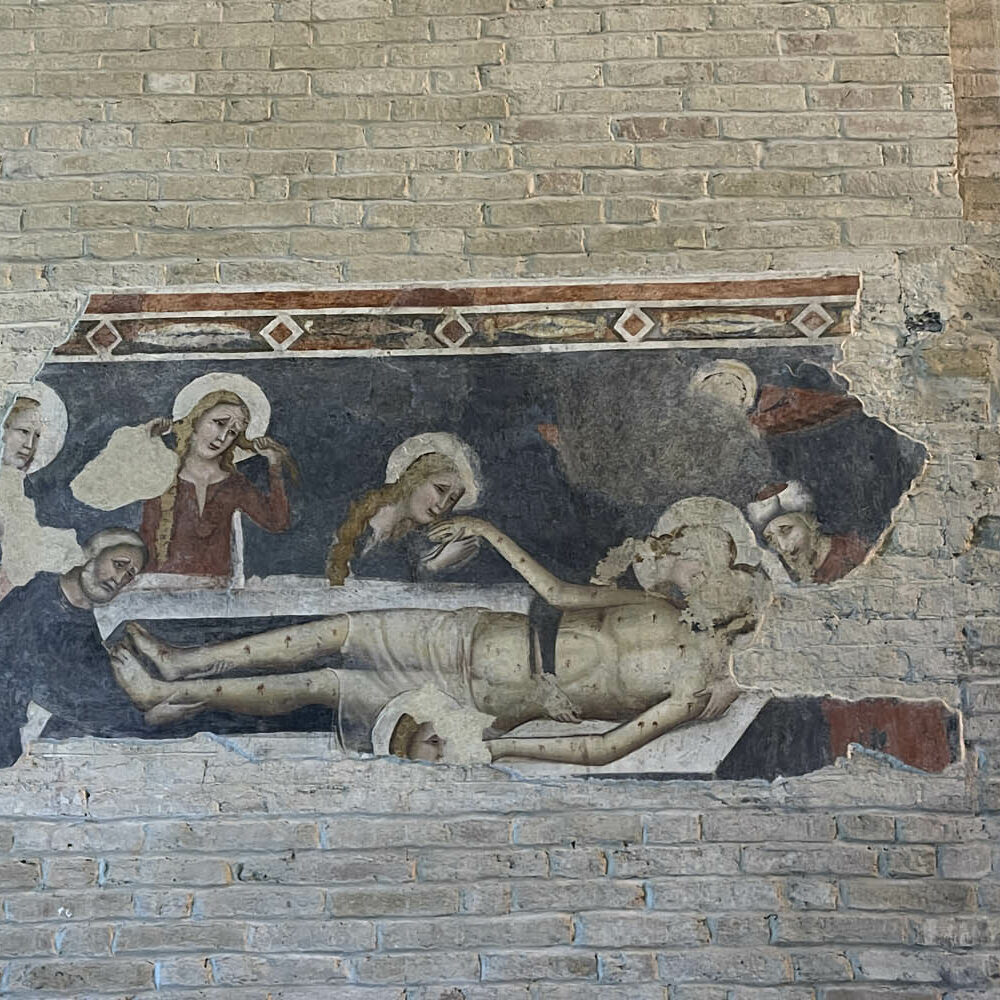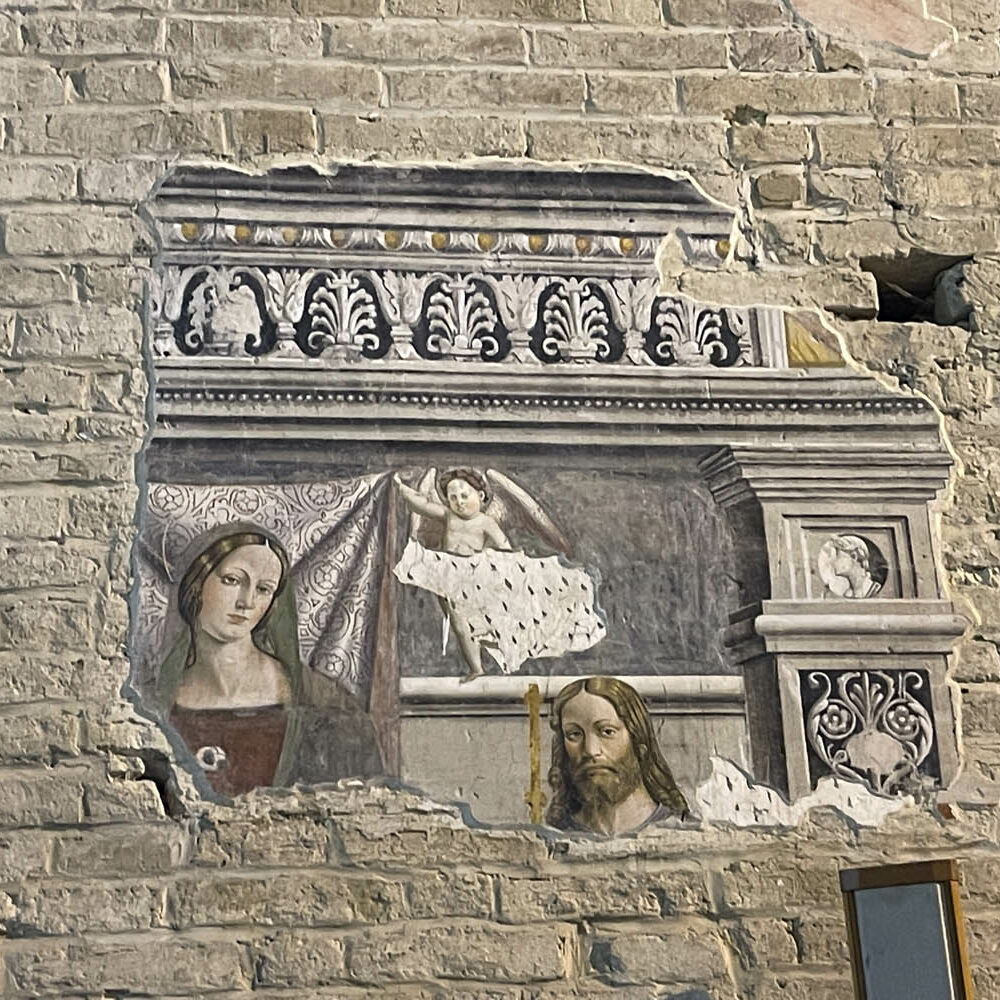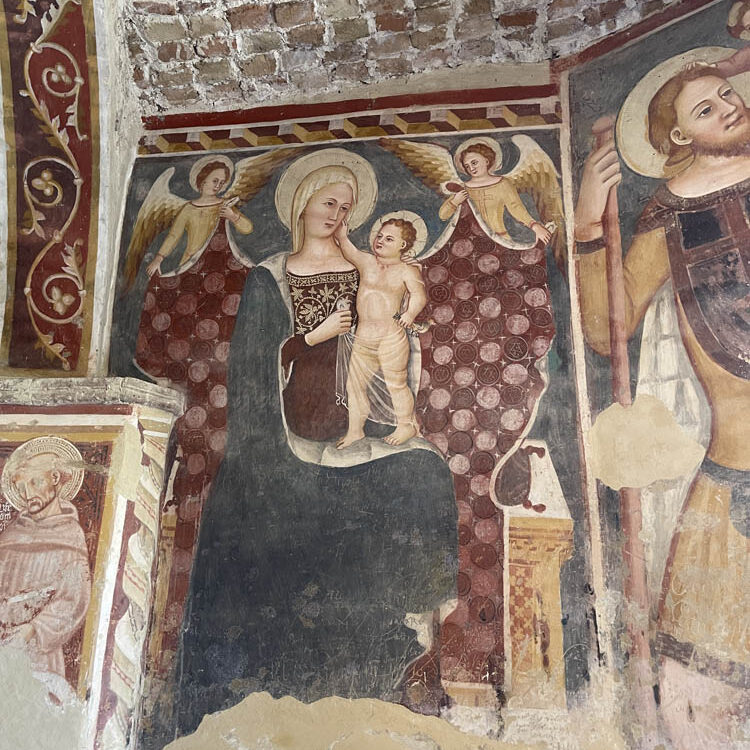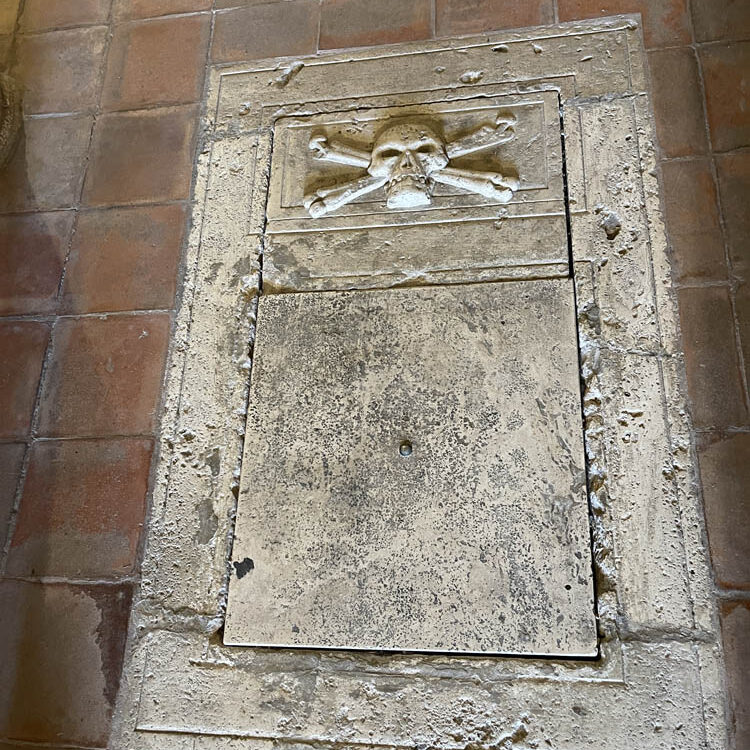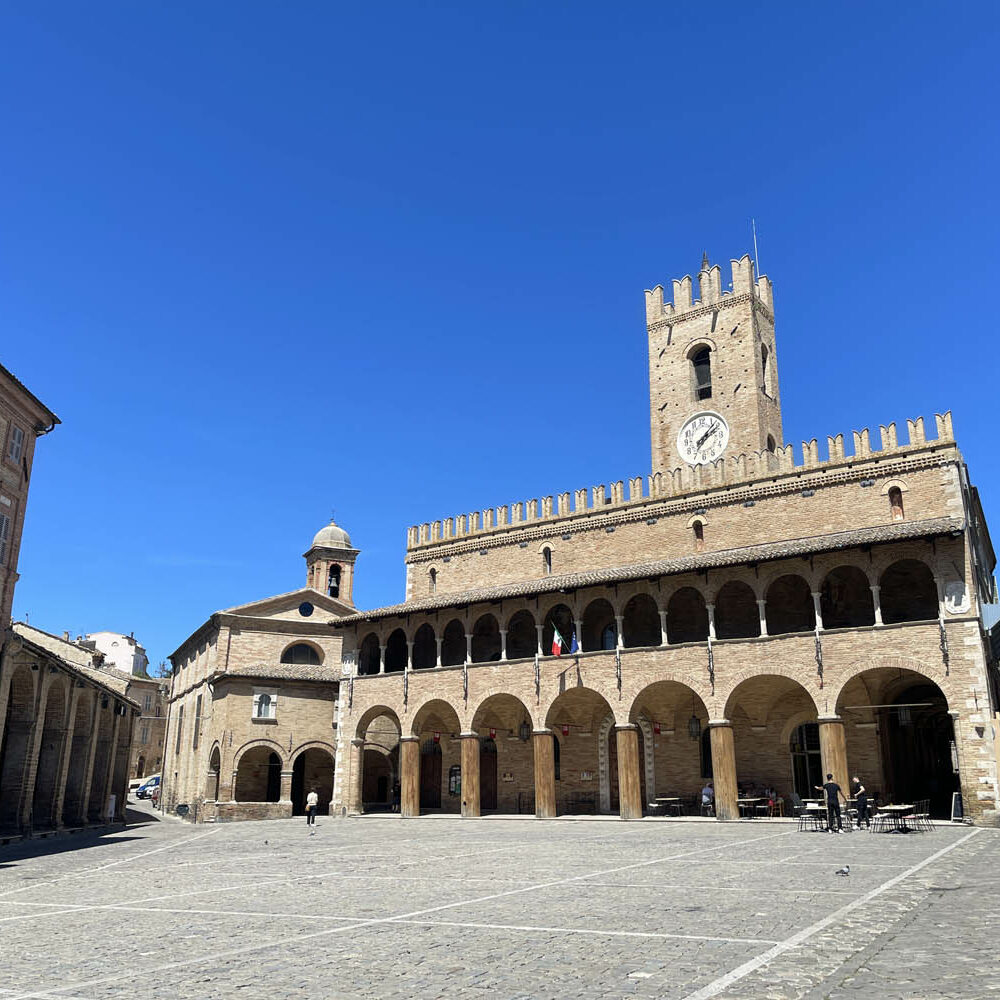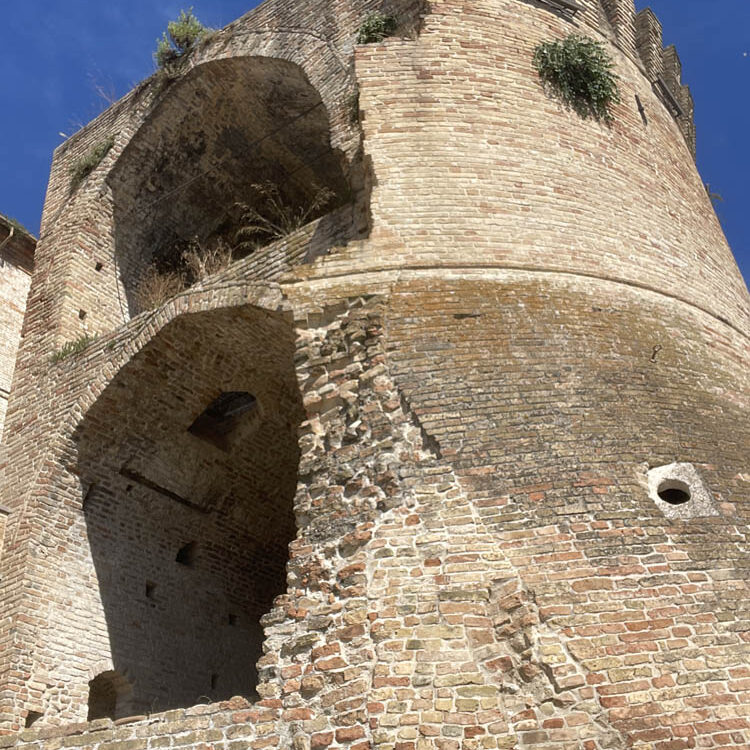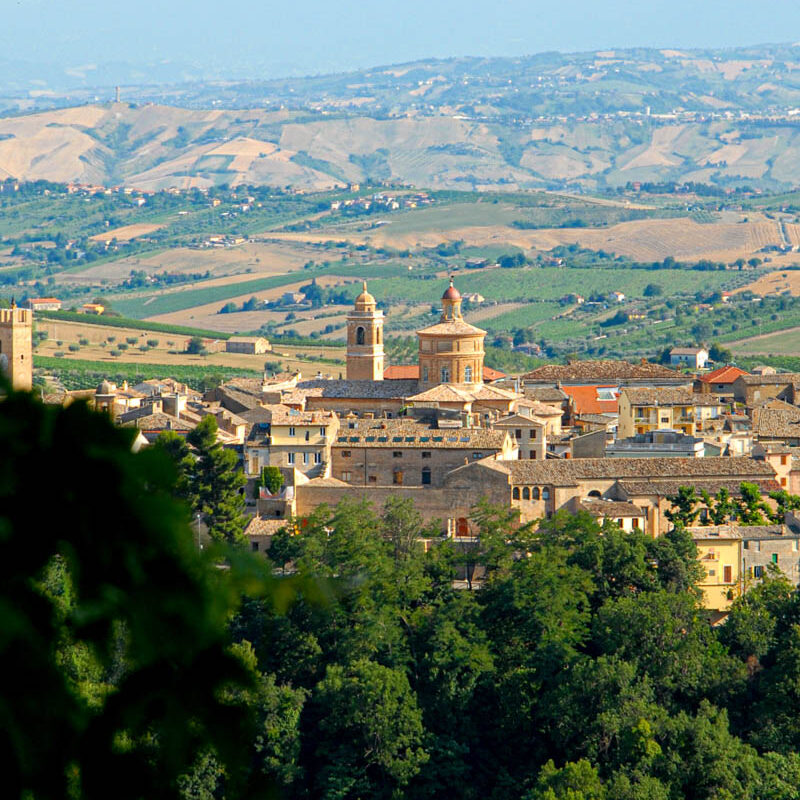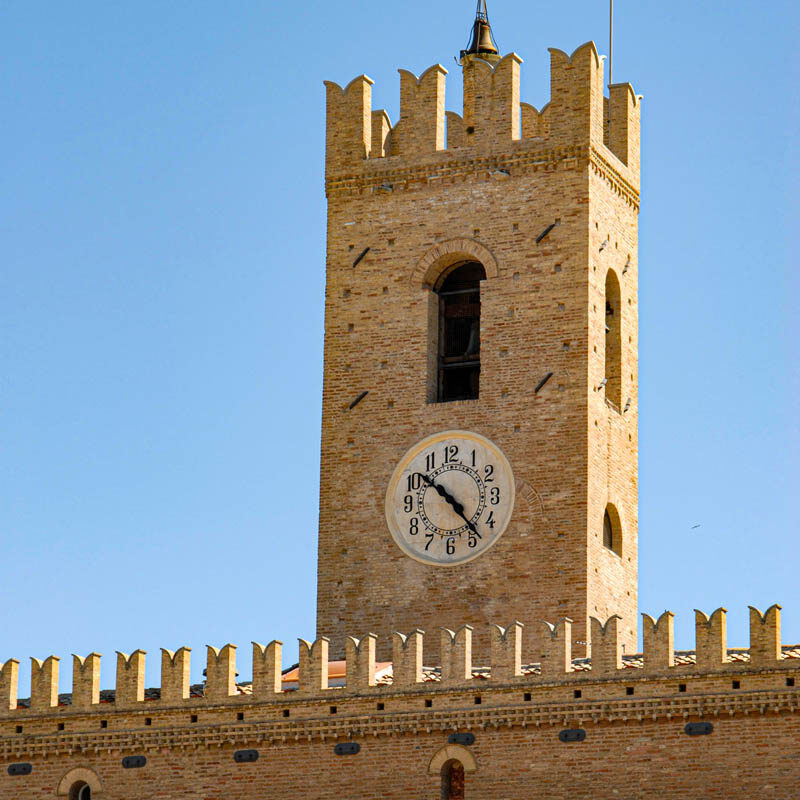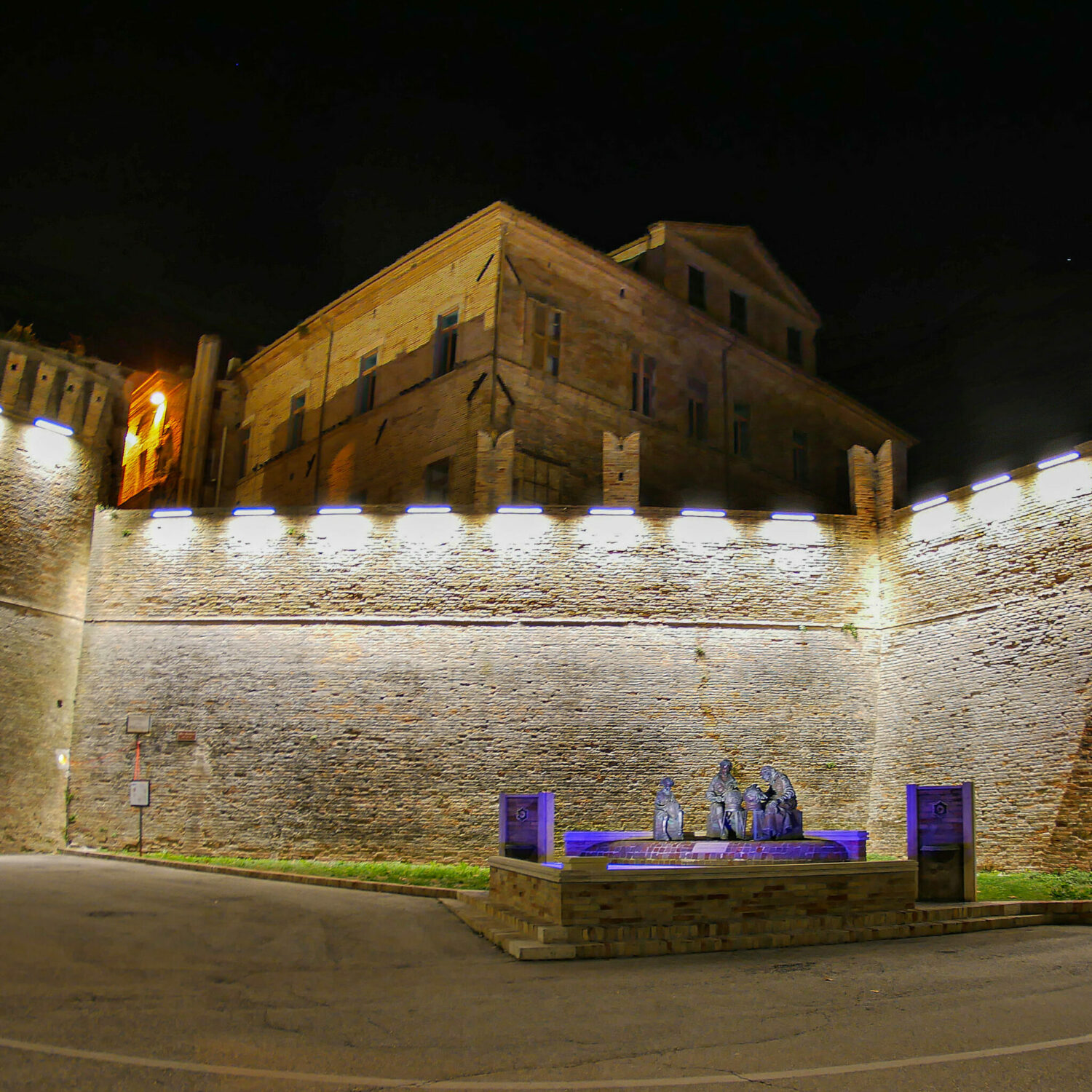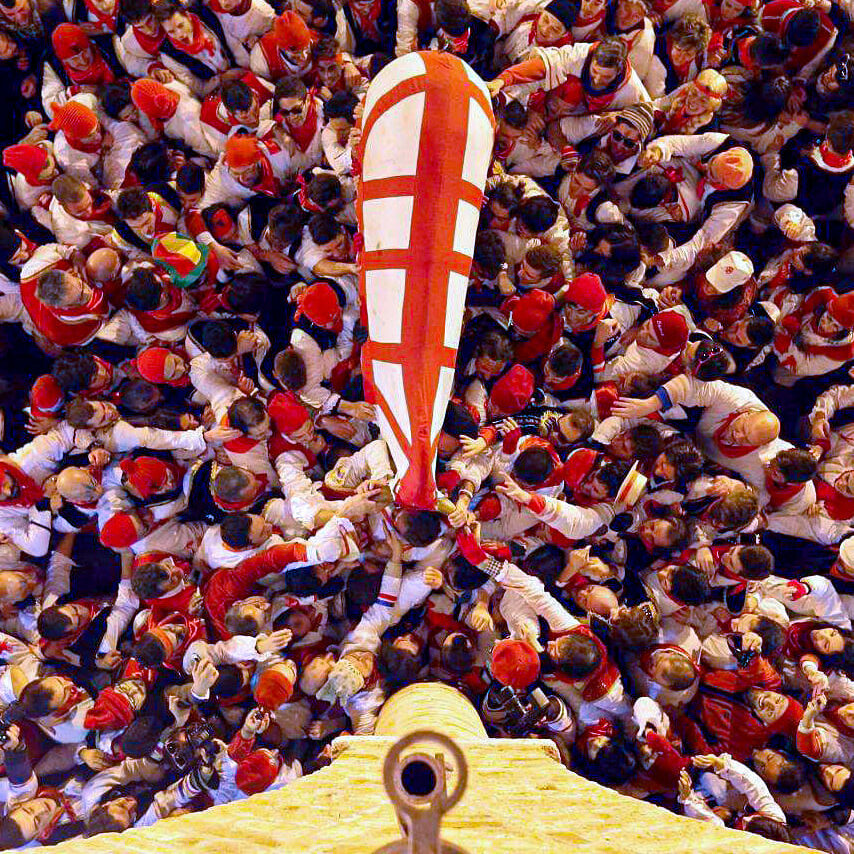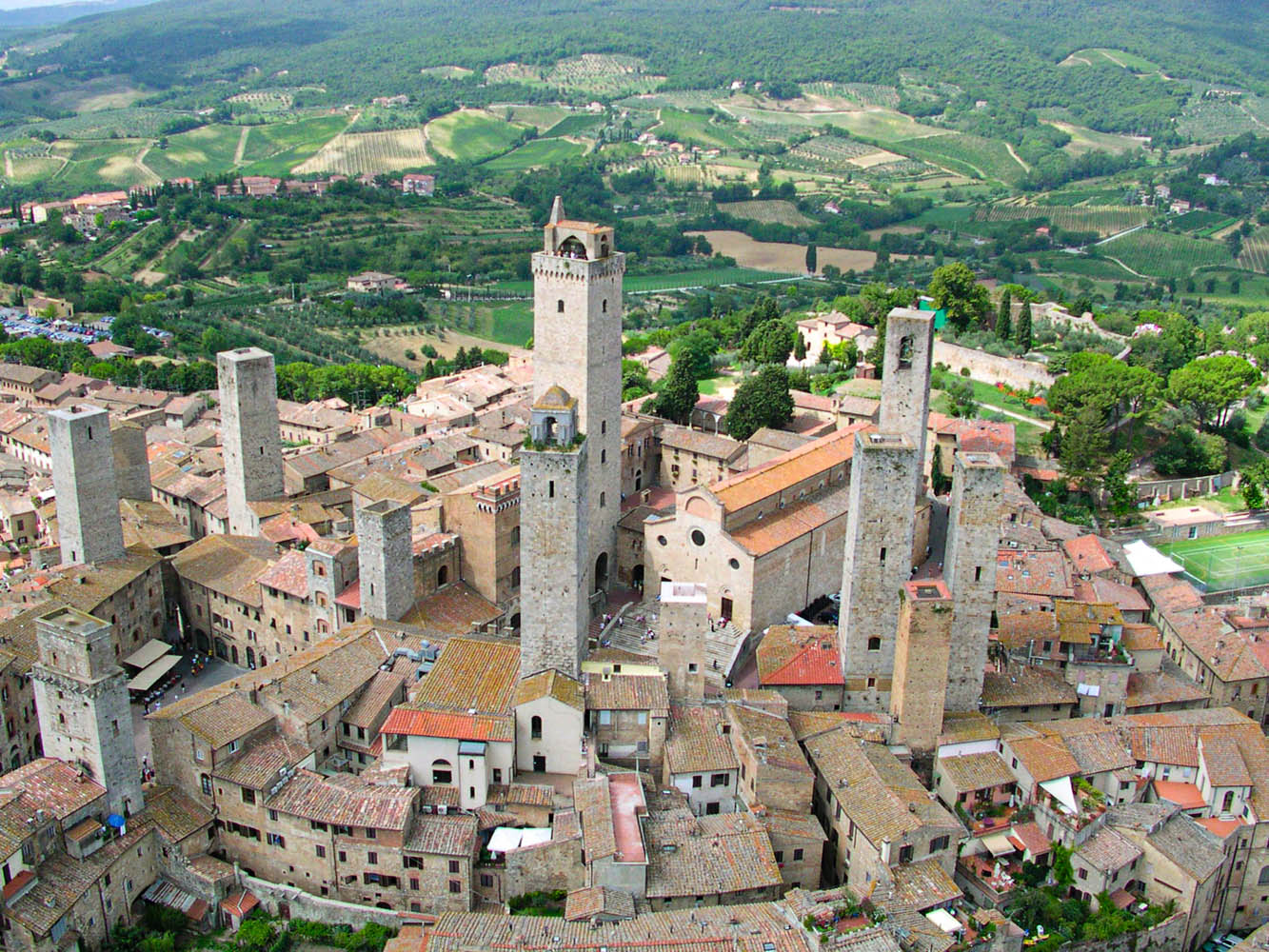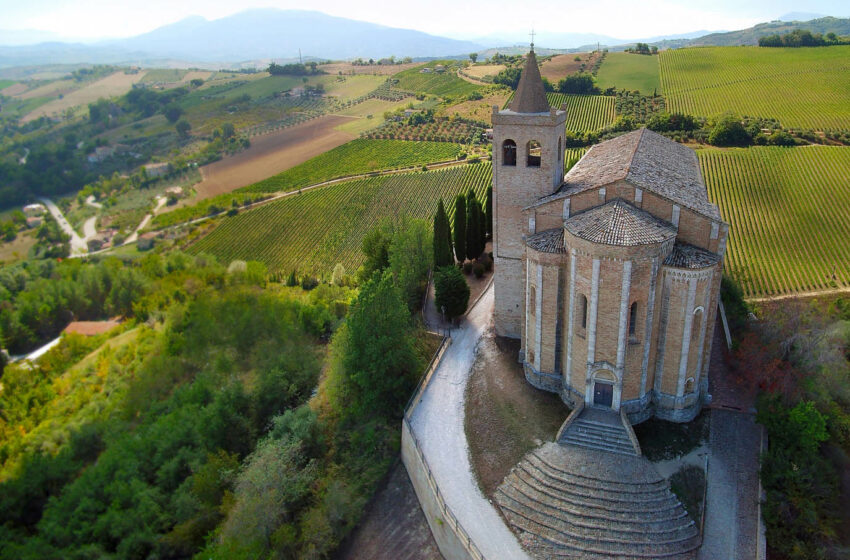
OFFIDA, threads of life, dreams, and slow living
Offida, in the province of Ascoli Piceno, is an unmissable destination for anyone wishing to immerse themselves in an atmosphere where history, traditions, culture, and nature blend in perfect harmony.
By Sandra Jacopucci and Maria Letizia Andreassi
We are in the Marche hinterland, among the gentle hills of Ascoli and a few kilometers from the Adriatic Sea. A unique panorama that ranges from Mount Ascension to the Sibillini Mountains, Mount dei Fiori, and on clear days, to the Gran Sasso and the Maiella. A small deviation from the Salaria, whose route is now followed by the State Road 4, leads to this Lombard-founded center, counted among the Most Beautiful Villages in Italy, a place embellished by its elegant architectures, historic palaces, churches, its hospitable people, in short, a corner of the world to unwind.
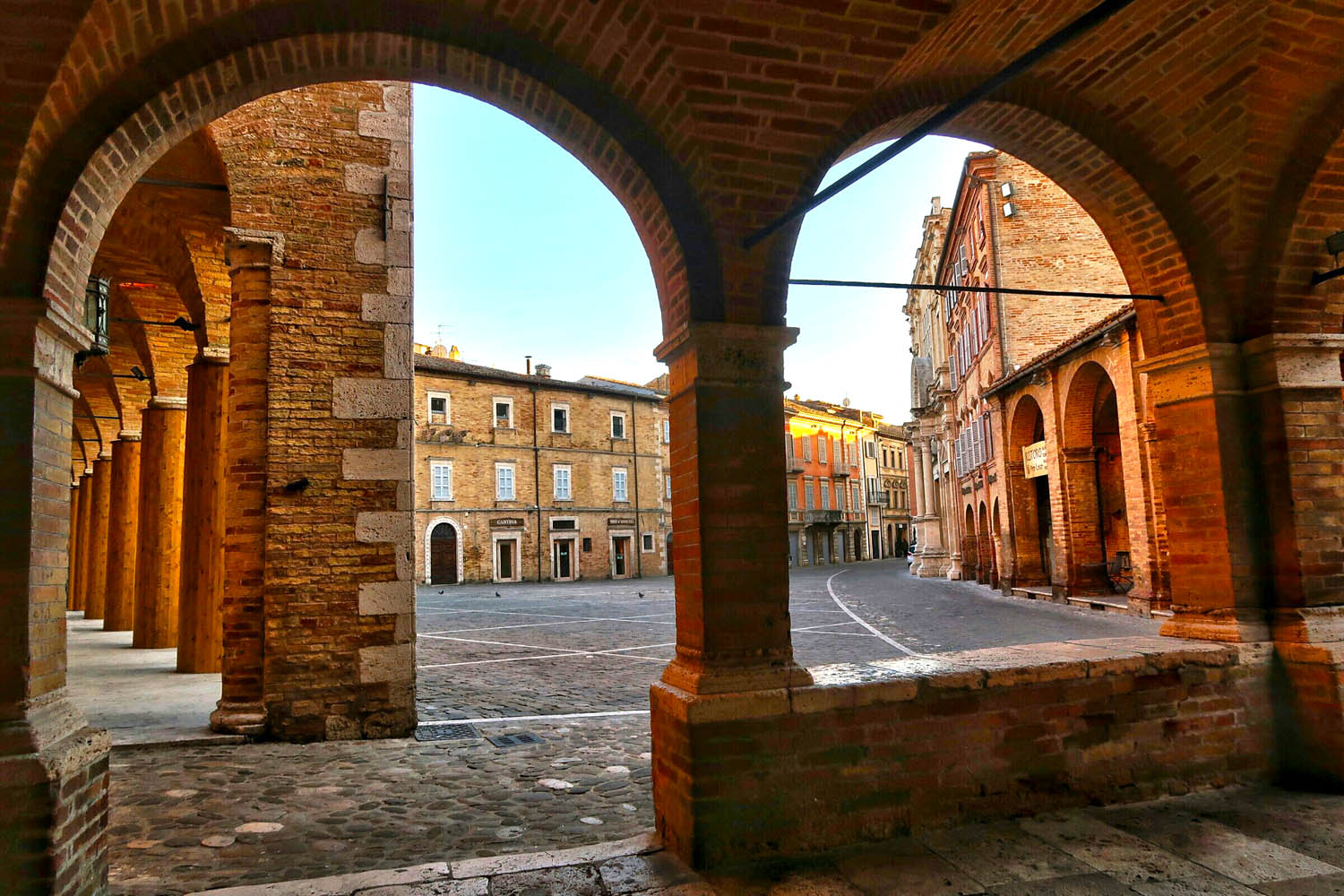
The settlement was originally a military fortress consisting of a city wall and towers that were almost completely destroyed during wars and the earthquake of 1943. It was in the Middle Ages that it reached its peak.
Piazza del Popolo is the best starting point for the visit, the beating heart of the city, a square that is forever remembered for its elegant combination of styles and materials that characterize it and for its unusual triangular shape.
Dating back to the second half of the eighteenth century, it features, on one side, the Church of the Collegiate Church of Santa Maria Assunta, under which there is a small crypt housing a miniature reproduction of the grotto of Our Lady of Lourdes, made in 1920, with rock from Mount Ascension.
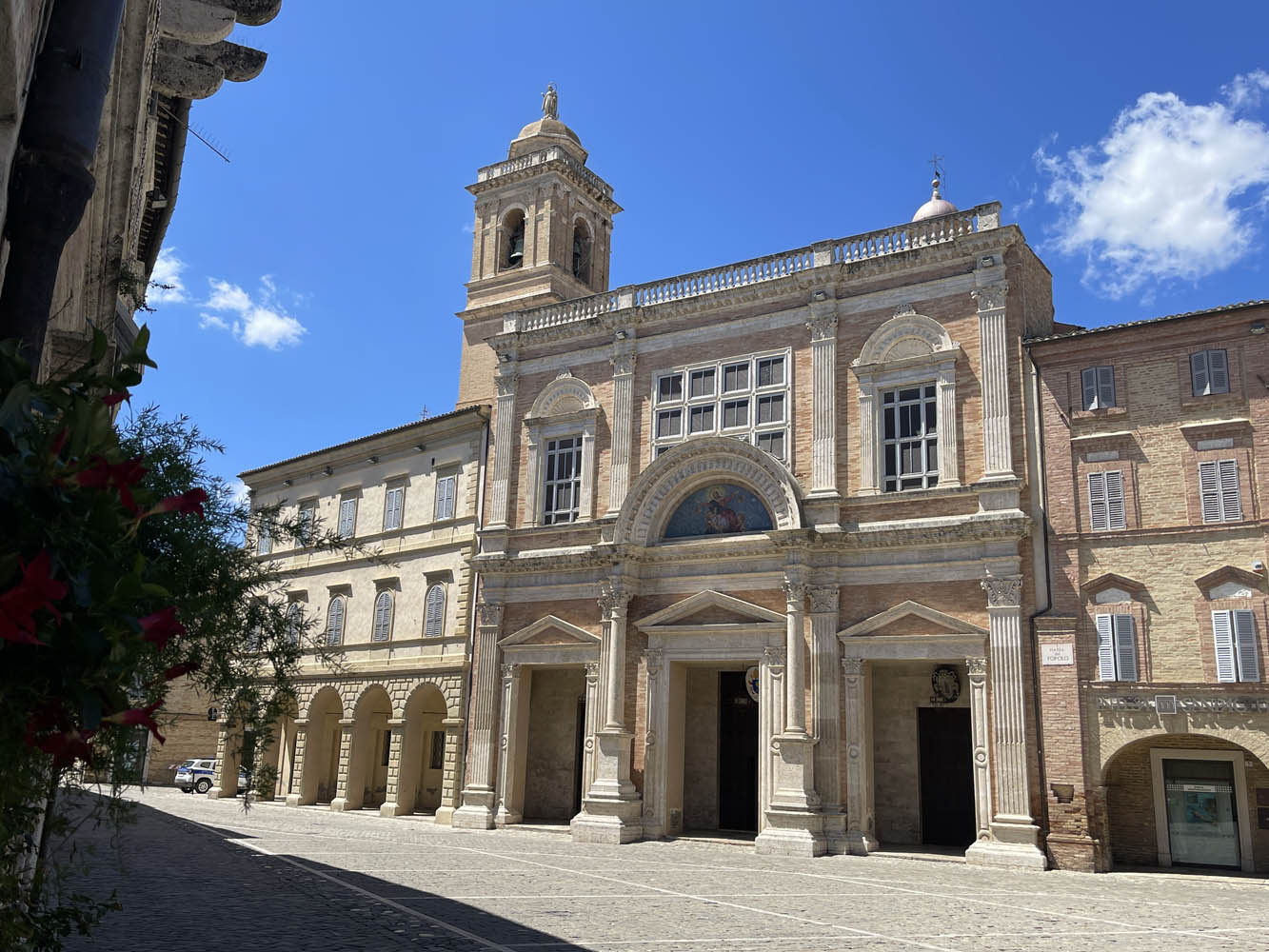
On another side is the Town Hall, with a loggia consisting of thirteen columns in travertine, the porch, and its medieval battlements, which are a bit of a symbol of the town and recall the lace and embroideries of the lace makers who have a long and ancient tradition here, so much so that at the entrance of the town, there is an original bronze monument to the Lace Maker, of large dimensions, made by the local sculptor Aldo Sergiacomi.
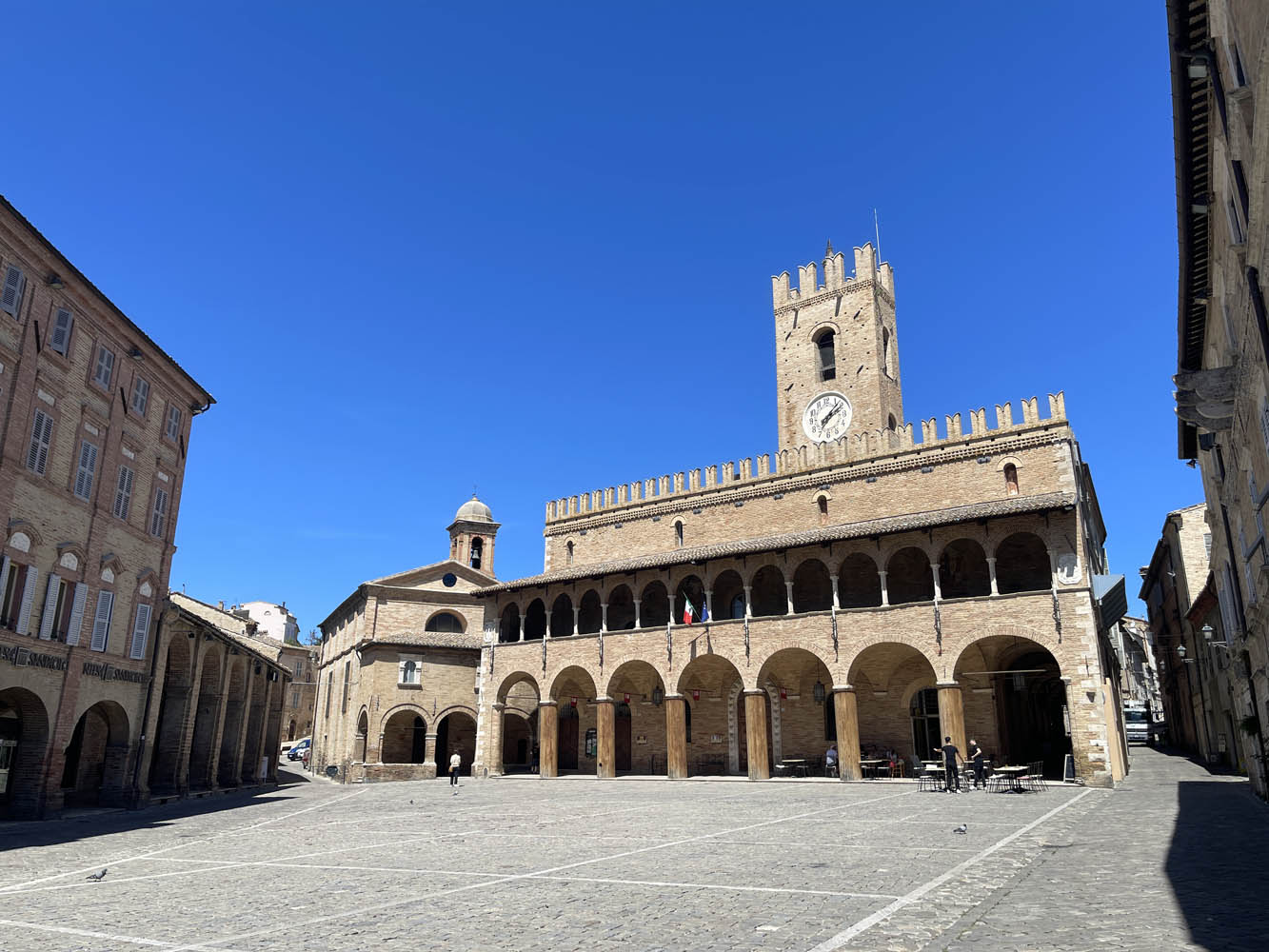
A recommendation from Elena Capriotti, Director of Confesercenti Marche Sud: “In a corner of the central square, almost unnoticed, is the tiny Church of the Addolorata, belonging to the homonymous confraternity, dating back to 1470. A gem not to be missed.”
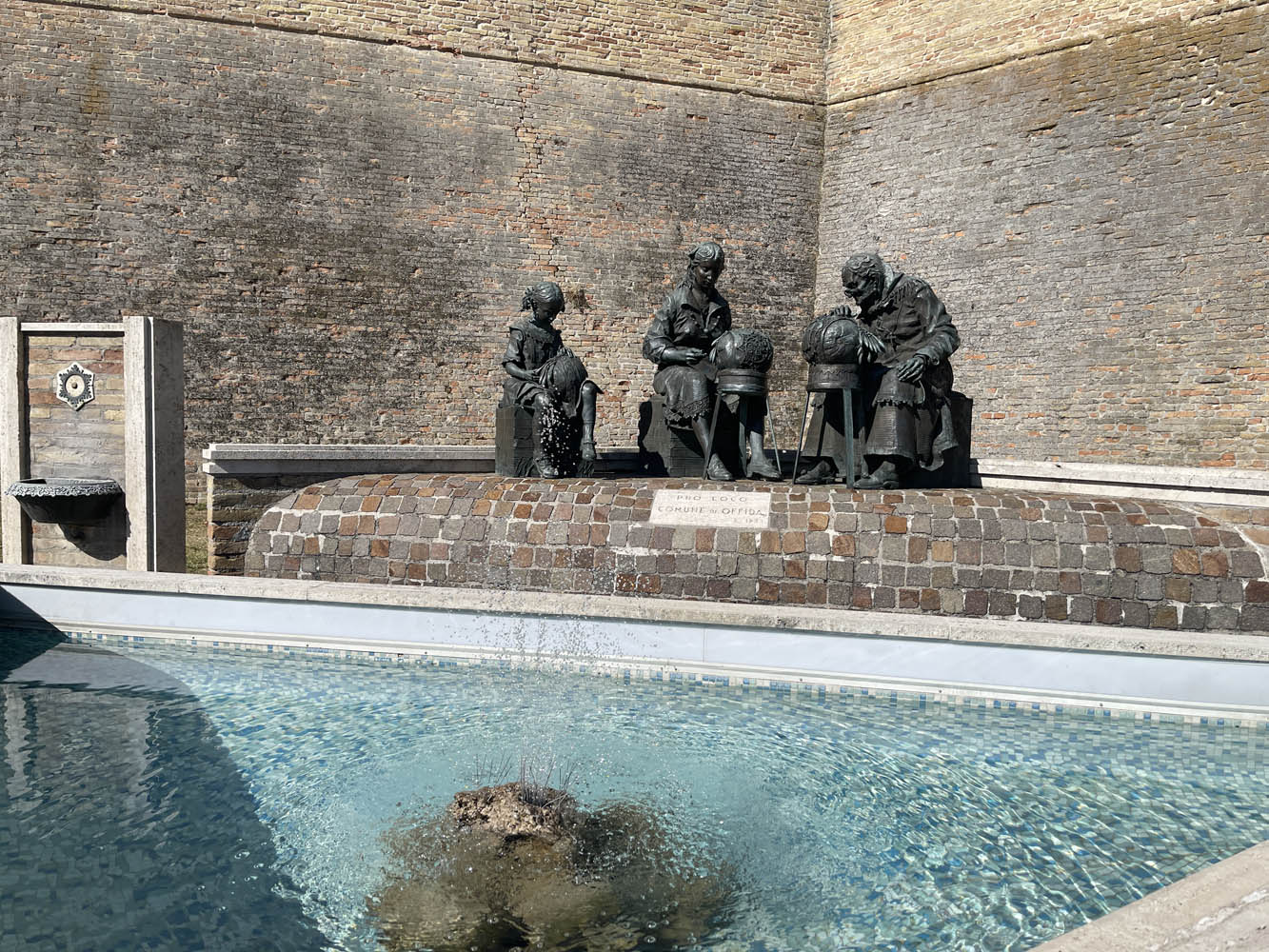
Within the historic center, in a joyful tangle of narrow streets, one can easily identify the narrow and picturesque Via dei Merletti where, sitting and bending over the bobbin lace pillow, it is possible to meet ladies, young and old, engaged in embroidery.
Rosa, a ninety-year-old with the spirit of a young girl, tells me: – “The air of Offida makes you feel young,” showing me a ten-meter lace that took seven months of work. “The lace goes slower than snails” and entails immense effort and skill, which become light to bear, with a smile and with love for this ancient activity of at least five centuries. The little shop where she works is actually full of authentic masterpieces, unique pieces of great value that have come out of the skilled hands of this sweet and romantic lady of bygone days.
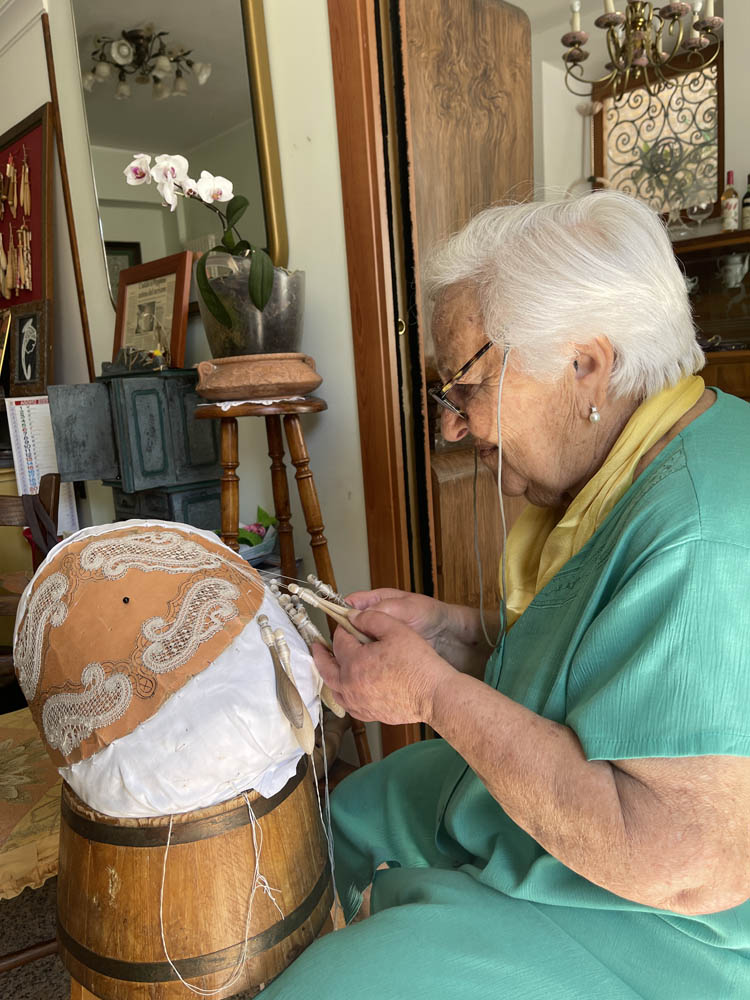
The first document testifying to an offering of lace by the Municipality to the Church of the Holy Cross to fulfill a vow dates back to 1511.
Unforgettable is the Bobbin Lace Museum, dedicated by the city to this true art, managed with enthusiasm and passion by the Lace Makers of Offida Association, with seven exhibition rooms where you can learn about the different techniques of lace making.
The most admired piece is a high-fashion dress by the English fashion designer of Sicilian origins Antonio Berardi, worn by the famous model Naomi Campbell. Here and in other small craft shops, you can buy fantastic lace and small jewels at affordable prices.
An art symbolizing the patience and skill of those hands that weave bobbins and move like in an ancient dance, creating marvelous lace of delicate beauty.

Offida is, above all, geometries and enchanting landscapes. After a short ascent, like an apparition, the splendid church of Santa Maria della Rocca, dating back to 1330, surrounded by suggestive cliffs, overlooks simultaneously three national parks of the Central Apennines: the Sibillini Mountains National Park, that of the Maiella, and that of the Gran Sasso.
The architecture of the church hides a curiosity related to the staircase leading inside: on one of the steps, almost imperceptible because worn by time, there is a bas-relief depicting a lamb that requires a precise ritual to be granted “such luck.” Ask for Stefano Mozzoni, coordinator of the municipal museum structures of Offida, who will not only reveal the secrets of the place but will also tell you the details of this ritual, which, if executed perfectly, could fulfill your wish.
The external facade is in brick and is traversed by pilasters in travertine in the apsidal part. In the center is the portal sculpted with fantastical animals. In the spectacular crypt, one can admire the beautiful frescoes of the “Master of Offida,” probably a monk who stands out, still today, for his peculiarity in painting halos and in representing Baby Jesus with a bird in hand.
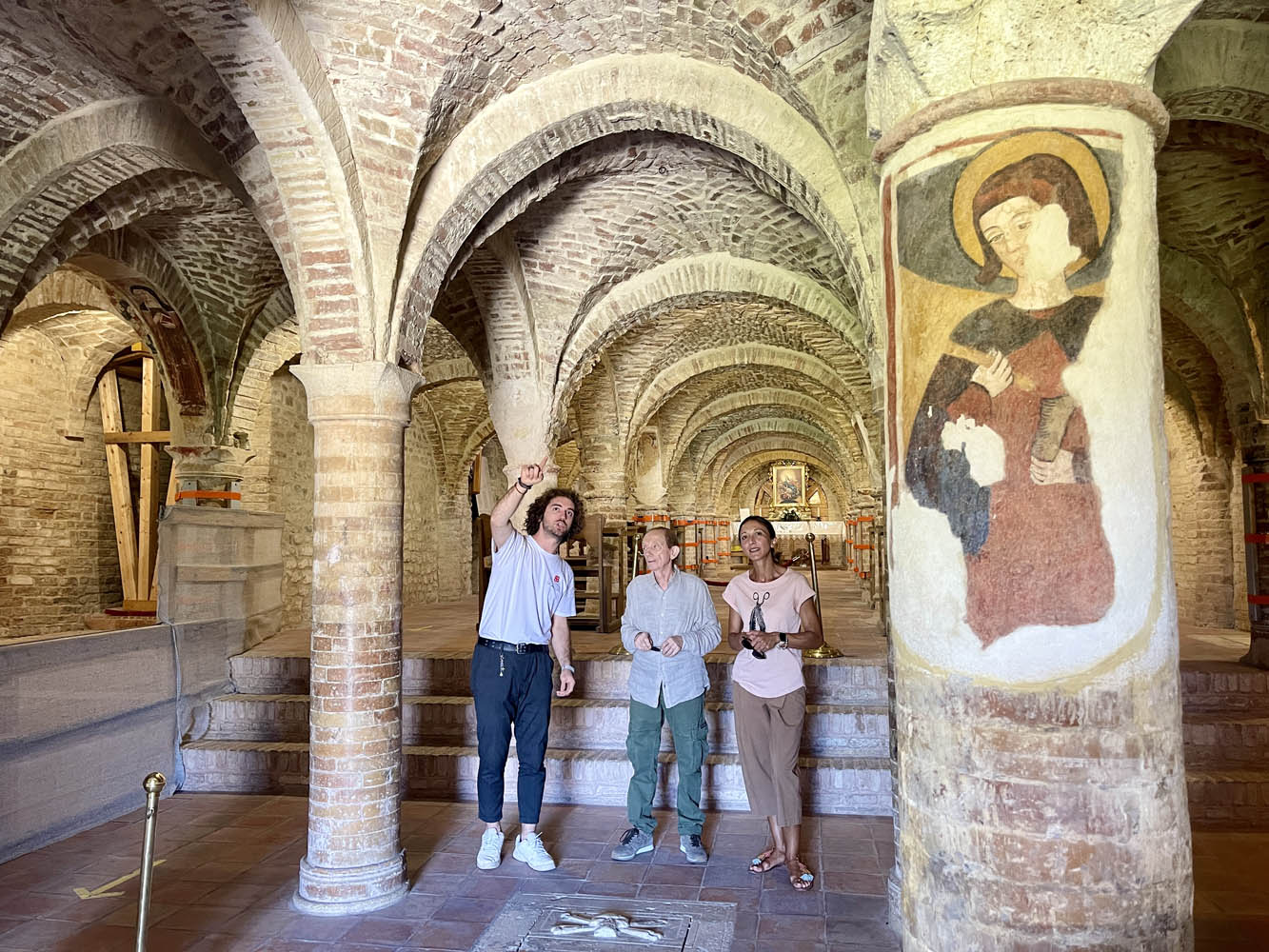
Do not leave Offida without entering the splendid Serpente Aureo Theater, designed by architect Pietro Maggi, with a baroque conception and a “boccascena” plan, or horseshoe shape. The stage, which preserves the old painted curtain depicting the legend of the mythical Golden Serpent, is the backdrop for various annual events: “The Night of the Mermaids” and “The Night of the Oscars” during Carnival, as well as themed parties like the “Masked Ball” and the “Elegant Ball.”
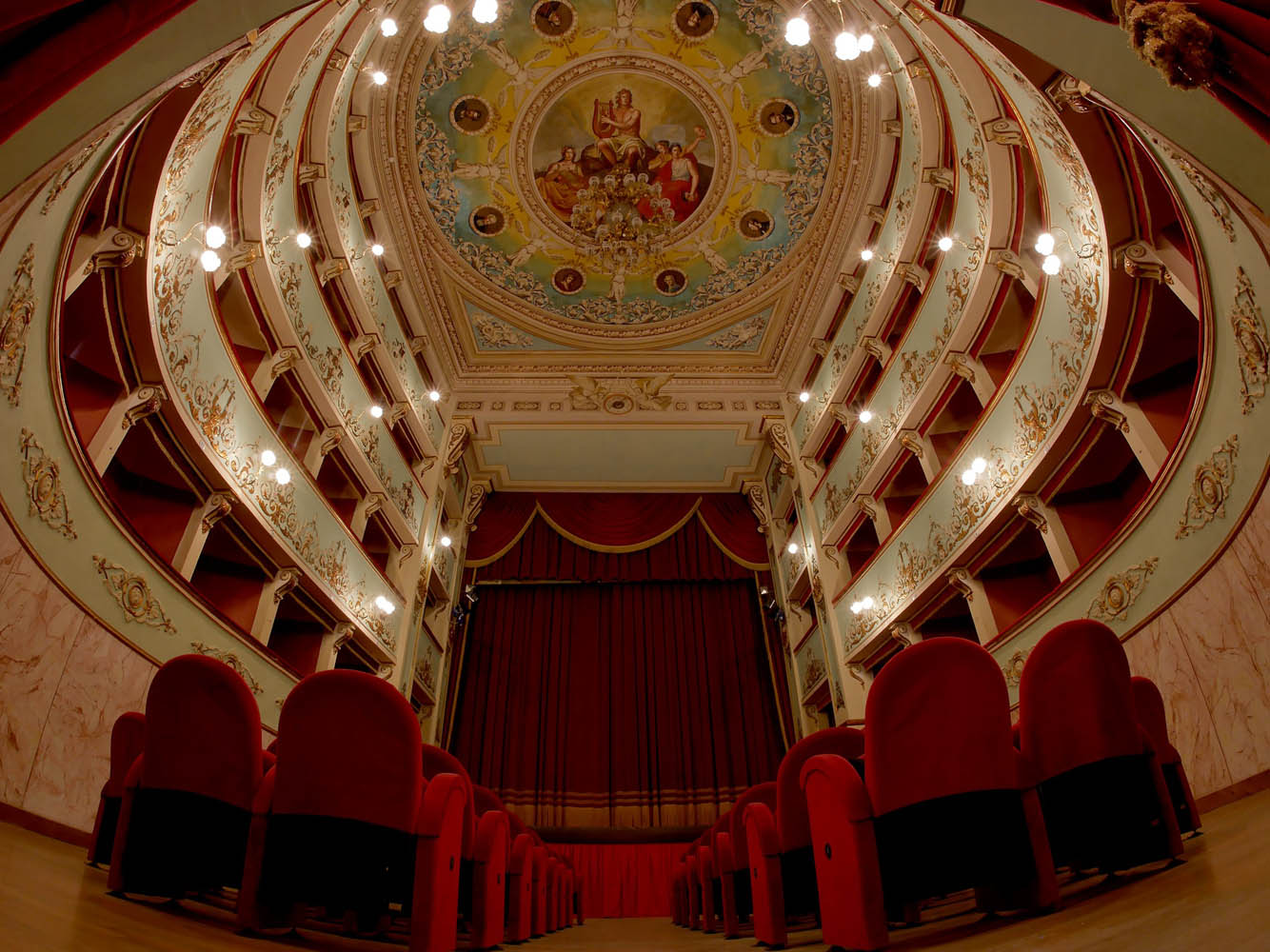
Carnival embodies the playful spirit of the place with “lu bov fint,” the fake ox. “V lurd,” a fire of emotions, closes the carnival and marks the beginning of Lent with Ash Wednesday. This year, the Carnival of Offida, founded in 1524, with its 500 years, is included among the historical carnivals of Italy.
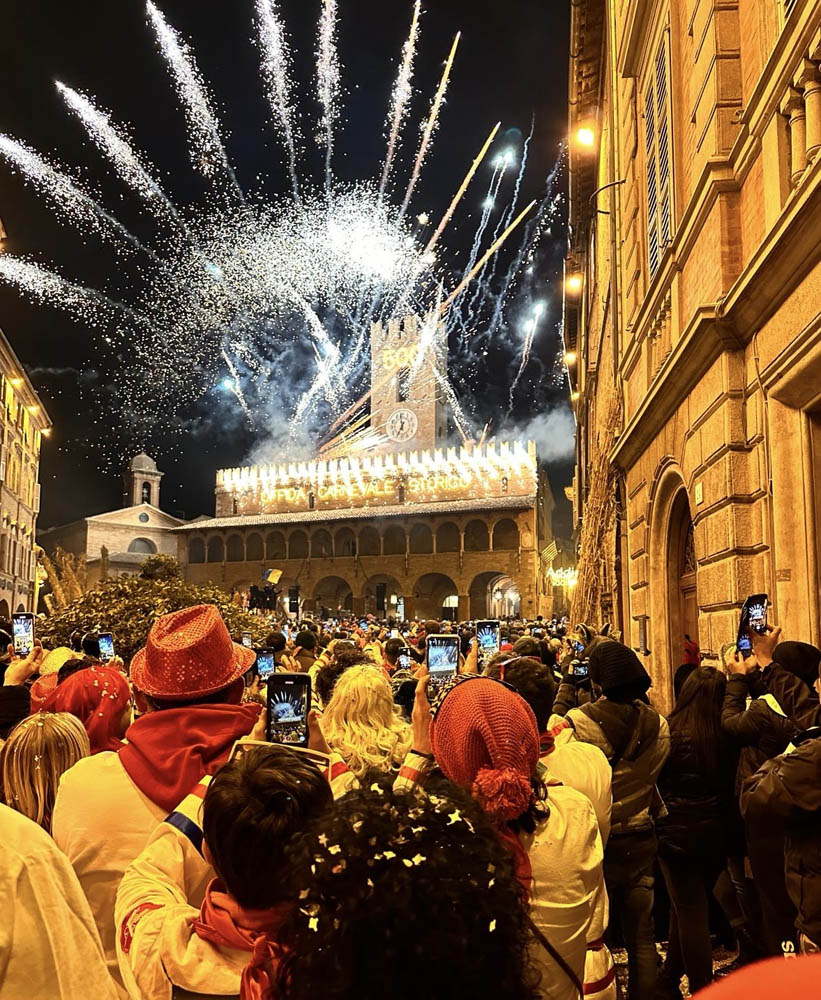
The center is also animated by the historic Offida associations: “International FOF,” a festival of street artists dedicated to puppet theater, and “Gustando Offida,” a traveling food and wine route that can be accessed with a ticket and visit streets, monasteries, churches, homes, and private gardens.
Music is one of the main attractions for young and old alike and finds its highest expression in the Giuseppe Sieber Music Institution, which offers the opportunity for high-profile training in the study of all instruments and singing.
Offida is home to the new Oleoteca, since 2021, and the Regional Wine Shop of the Marche, a former prison, built on the remains of the medieval castle, where you can taste the precious local wines: pecorino, passerina, rosso piceno, and rosso piceno superiore, a blend of 85% montepulciano and 15% sangiovese.
Since 2011, the city boasts a DOCG (Controlled and Guaranteed Designation of Origin) named precisely “Offida.”
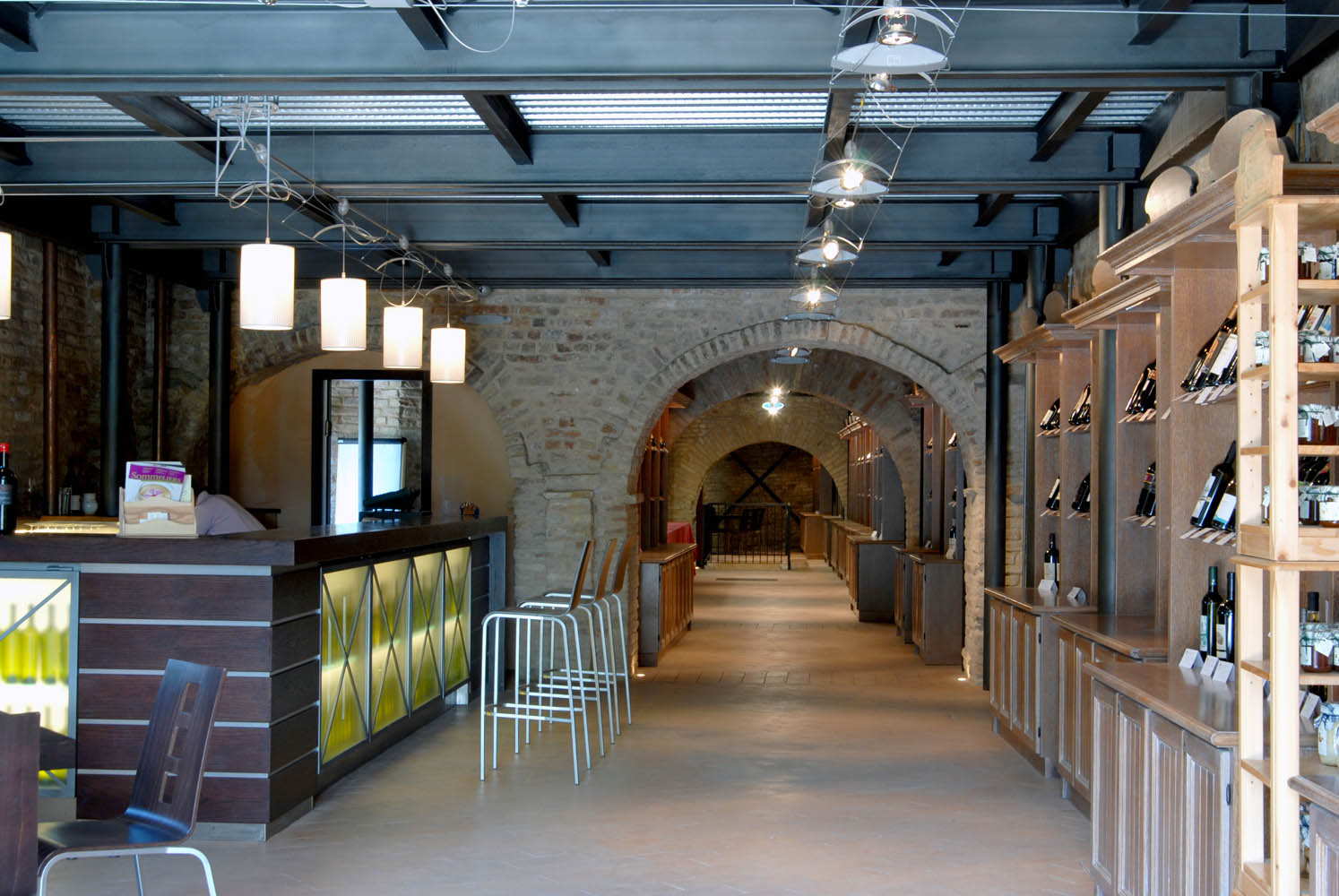
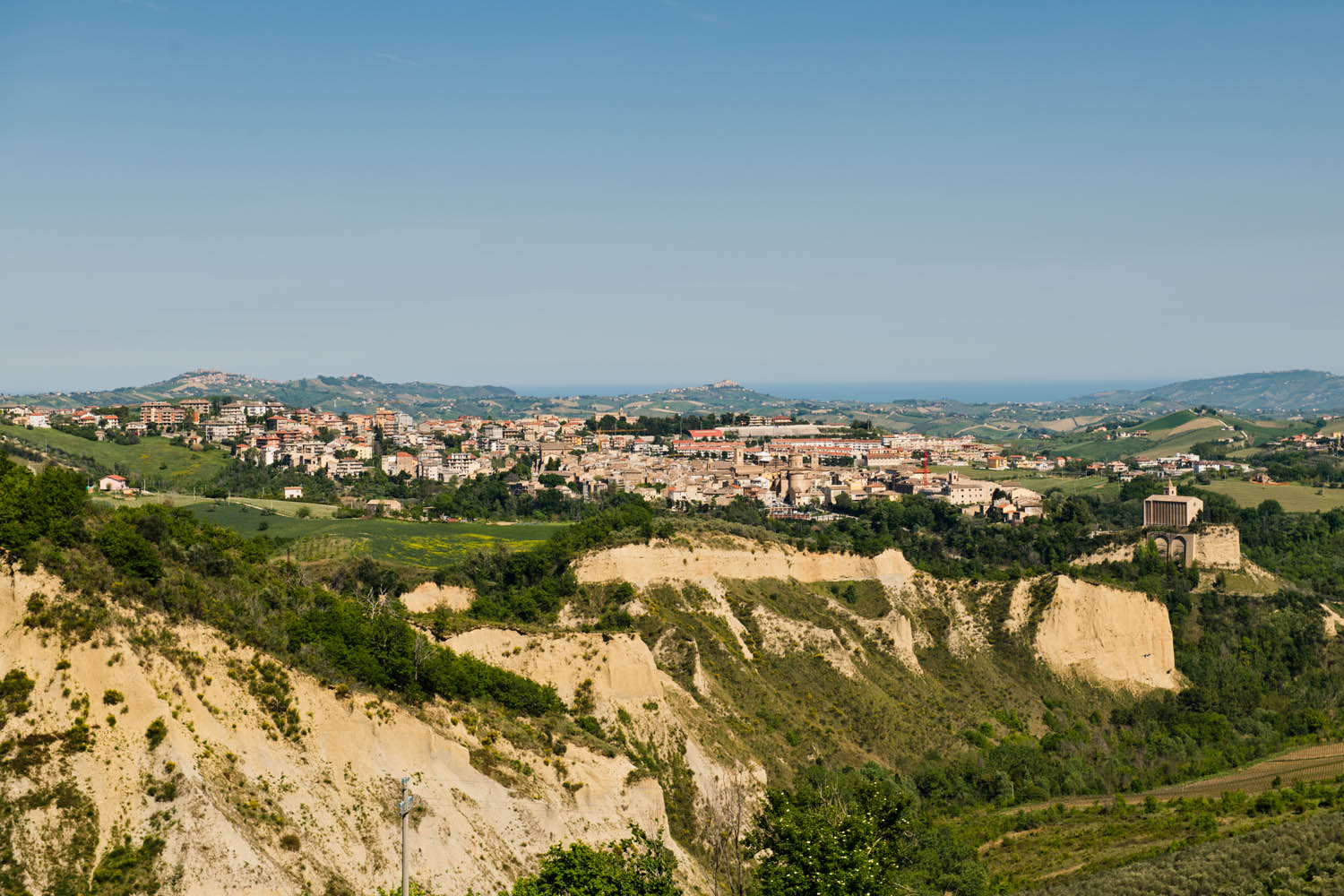
Gallery fotografica:
Credits foto:
AssoArtisti-Confesercenti
Sandra Jacopucci
Leggi di più >> La cucina offidana e l’influenza longobarda
Giornalista detentore dal 2015 del Guinness World Records TV e Ambasciatore Borghi più Belli d’Italia.
Leggi in:
![]() Italiano
Italiano





